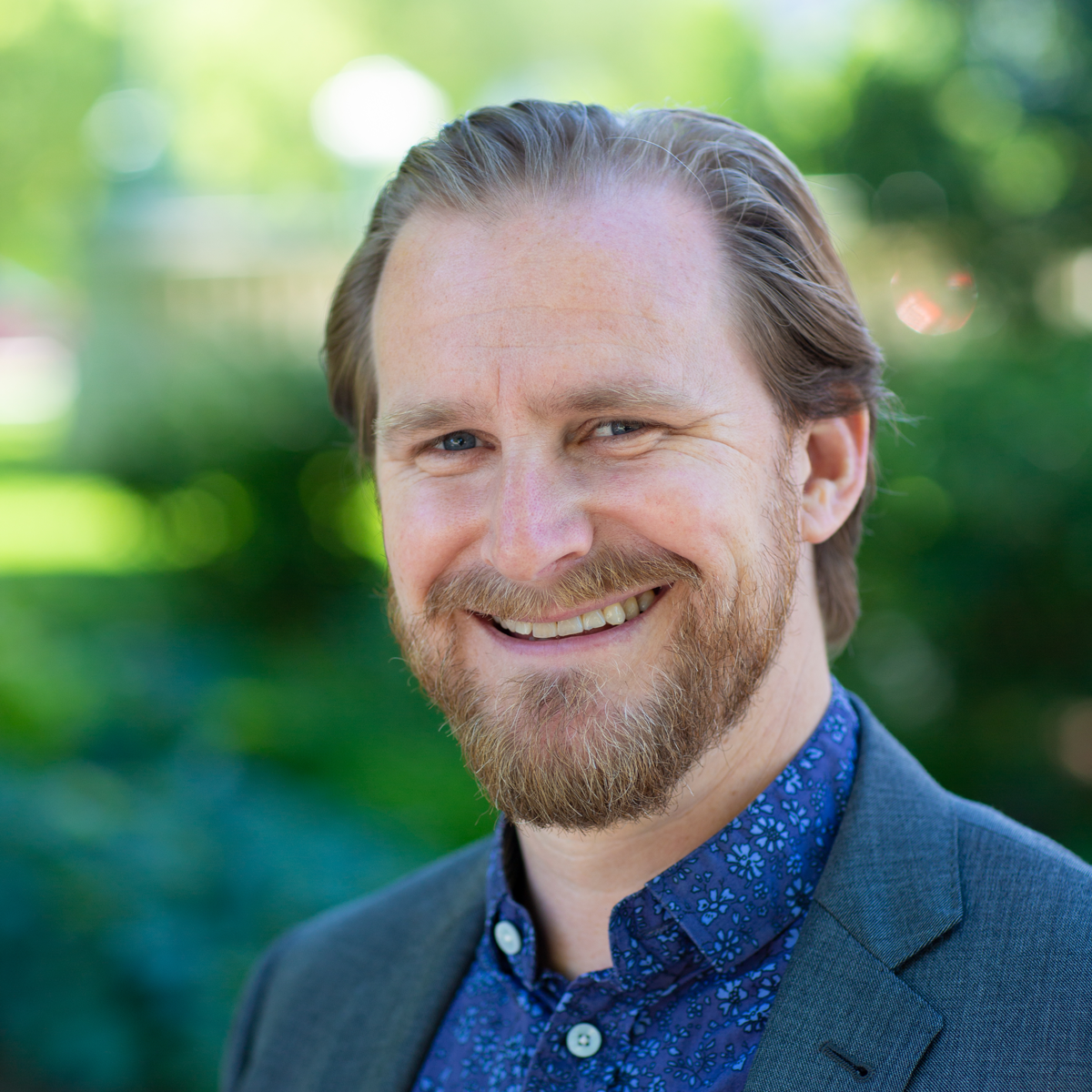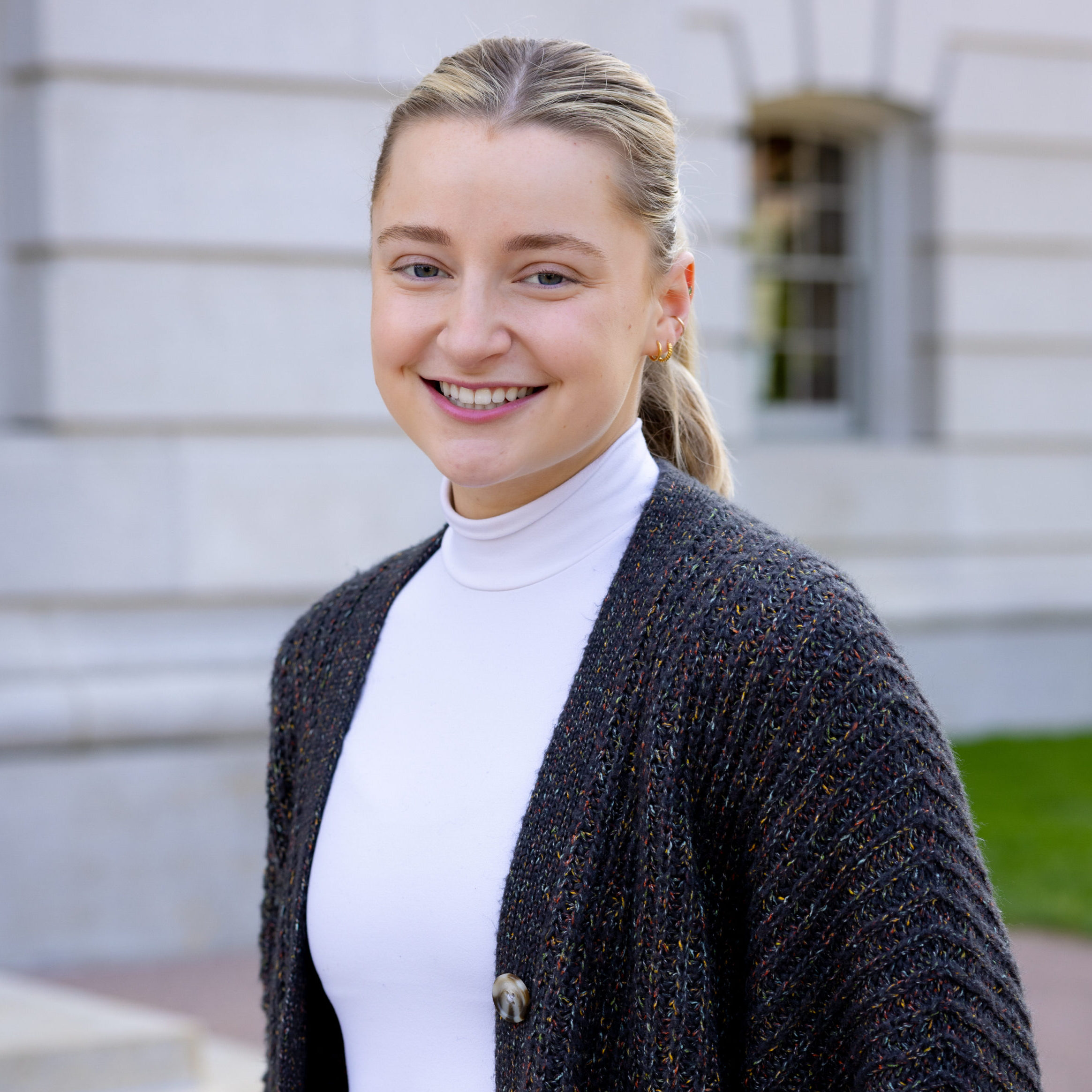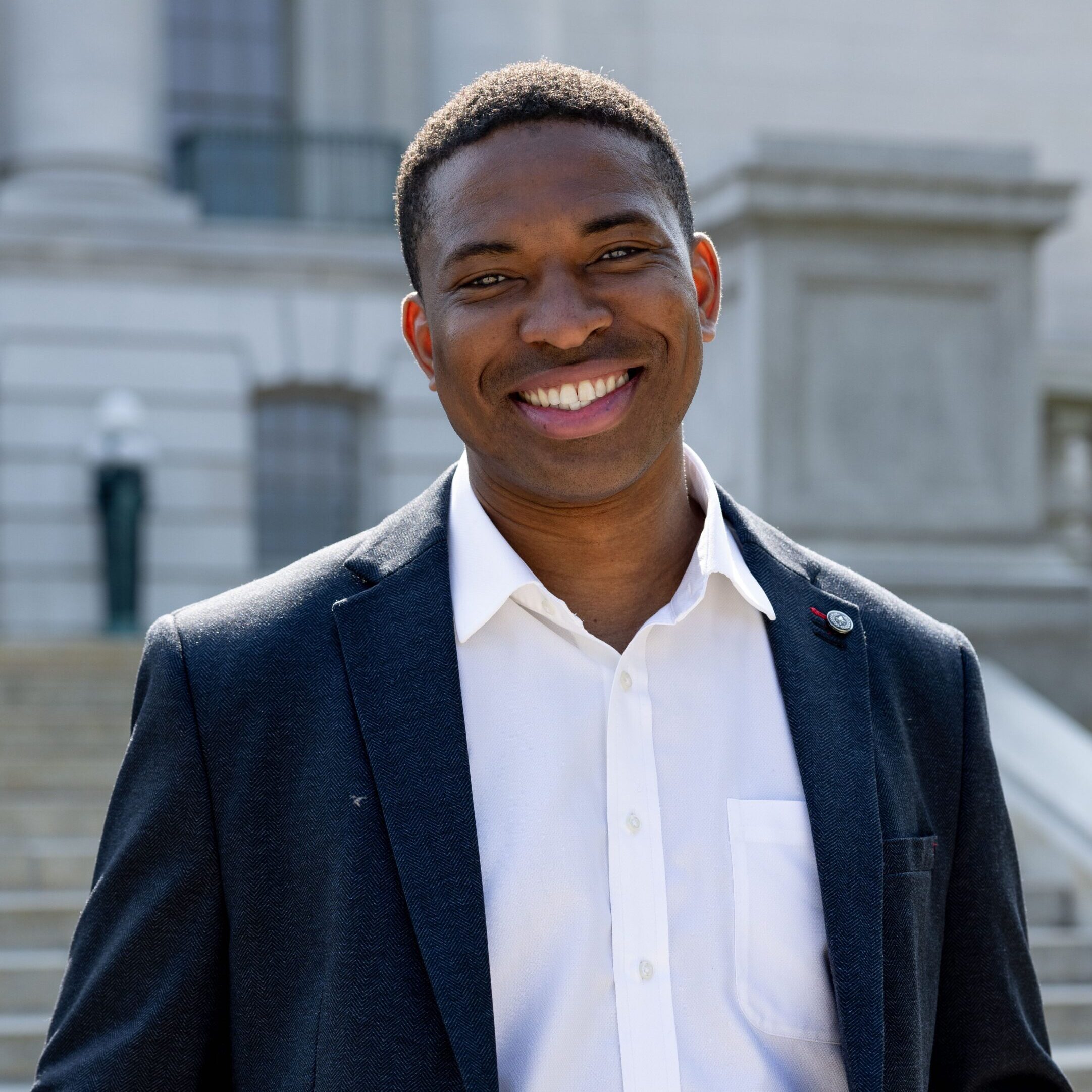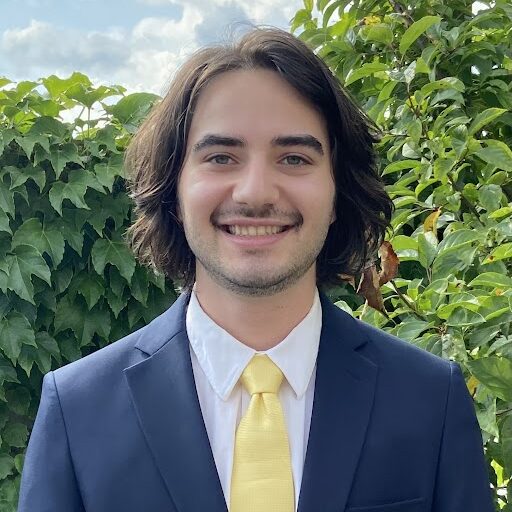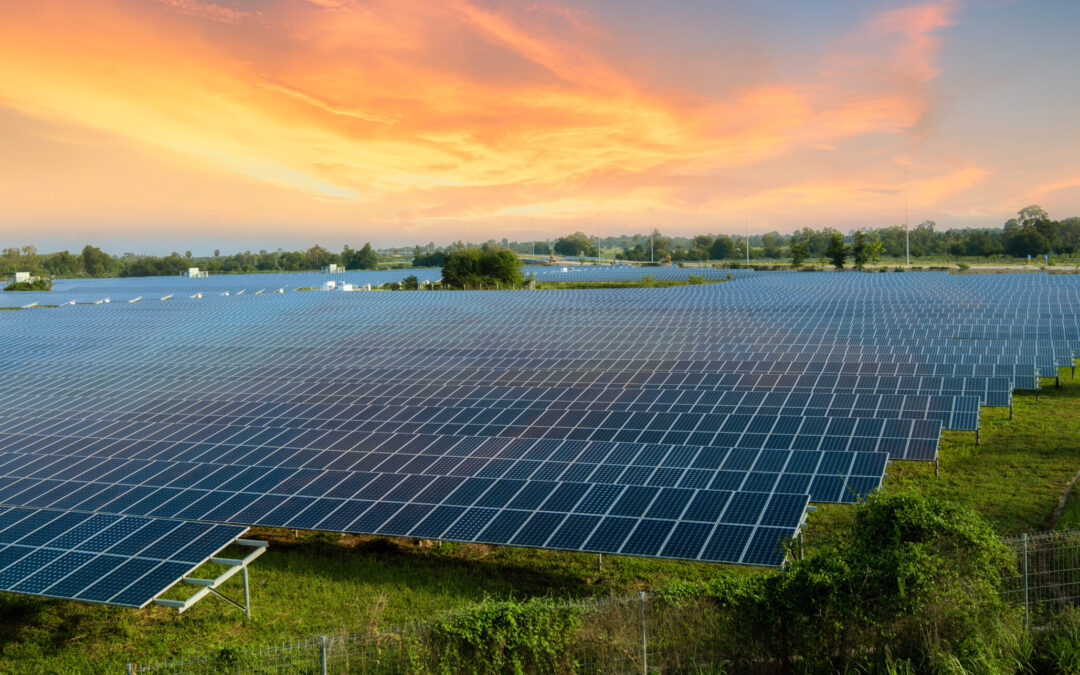
by Michael Vickerman | Jun 29, 2023 | Solar, Utilities, Utility Scale
Wisconsin electric providers added significantly more renewable energy content to their electricity supplies in 2022, according to a June 2023 report issued by the Public Service Commission. Overall, renewable energy accounted for 16.2% of Wisconsin electricity sales in 2022, increasing more than two percentage points from the 13.8% level recorded in 2021.
Renewable energy performance varied widely among individual electric providers. At the high end, Northern States Power-Wisconsin (Xcel-NSPW) reported that 44.5% of the electricity it sold in 2022 came from renewable energy sources (see Table 1). Though making up only 10% of Wisconsin electricity sales, Xcel-NSPW accounts for nearly 27% of the state’s total renewable electricity supply. Most of the utility’s added renewable energy supplies came from wind power projects in Minnesota and the Dakotas.
Wisconsin Power and Light (Alliant-WPL) also posted healthy gains in 2022, rising from 20.2% in 2021 to 24% last year. Indeed, of the 11.3 million megawatt-hours (MWh) of renewable energy sold in Wisconsin in 2022, about one-half of that total (5.7 million MWh) flowed through either Xcel-NSPW or Alliant-WPL to their customers.
Under the state’s Renewable Portfolio Standard (RPS), electric providers must track their renewable energy sales from the previous year and provide those results to the Public Service Commission. The 2022 results are retrievable from the Commission staff memo issued in Docket 5-RF-2022, specifically Appendices D and E of PSC REF#: 470111. These annual reports also compile renewable electricity provided through utility renewable energy tariffs, such as community solar offerings.
The PSC’s RPS reports break down aggregate renewable power totals by resource and state of origin. Imports from other states accounted for nearly two-thirds of total renewable electricity sales (64% vs. 36%). In 2022, wind projects generated 74% of the renewable electricity sold in Wisconsin, followed by hydro (14%), solar (7%), and biomass (4%). Moving in with greater granularity, wind power originating from out-of-state sources accounted for 59% of total renewable energy sales, followed by in-state wind (15%), in-state hydro (10%, and in-state solar (6%).
The percentage of out-of-state wind generation relative to total renewable electricity sales has increased dramatically since 2017, rising from 48% to 59%.
Tracking individual utility performance
In the wake of utility commitments to substantially reduce carbon emissions by 2030 and reach net zero emissions by 2050, these compliance reports take on added importance in tracking electricity provider progress in meeting their goals. Table 1 below shows that while some utilities, such as Xcel-NSPW and Alliant-WPL, have responded quickly to the challenge, others, such as We Energies, have made little headway. As documented by these annual reports, the volume of renewable MWh sold to We Energies customers has declined since 2017.
Bear in mind that We Energies, the state’s largest electric utility, accounts for about one-third of total electric sales in Wisconsin (23.5 million MWh out of 69.9 million MWh). Of that total, only 1.46 million MWh, or 6.2%, were generated from renewable resources. While We Energies derives a significant portion of its electricity supply from the Point Beach Nuclear power plant (8.7 million MWh in 2022), it will be no small undertaking to acquire solar capacity quickly enough to overcome the lackluster results of recent years.
We Energies owns approximately 30 MW of the 1,000 MW of solar generating capacity presently operating in Wisconsin. Though its first two major solar investments—Badger Hollow 2 (50 MW) and Paris (150 MW)—are expected to commence operations in the fourth quarter of this year, their output won’t deliver a noticeable boost to We Energies’ renewable energy content until 2024, which will be reflected in the Commission’s 2025 RPS report. We Energies’ share of Badger Hollow 2 and Paris should generate 400,000 MWh/year, equivalent to 1.7% of We Energies’ 2022 sales.
We Energies will need to greatly accelerate the pace of their generation transition to become 20% renewably powered by 2030, effectively tripling the 1.46 million MWh recorded in 2022.
In contrast, 69% of the electricity supplies serving Xcel Energy’s Upper Midwest territory came from carbon-free sources in 2022, according to its corporate sustainability report. (Note: the 69% number includes output from Xcel Energy’s two nuclear power units in Minnesota). By 2030, the percentage of carbon-free generation is expected to rise to 81%. The report also states that, by 2029, coal generation will no longer supply Xcel’s Upper Midwest territory, including NSPW.
This spring, Xcel-NSPW committed to purchasing the output from the Apple River solar farm in Polk County, adding 100 MW of solar power and 100 MW of storage capacity to its generation portfolio. Developed by National Grid Renewables, Apple River should be online sometime in 2025.
And by July 2024, Alliant-WPL will have completed and placed in service close to 1,100 MW of solar generating capacity in Wisconsin, which will account for 20% of that utility’s sales in the Badger State.
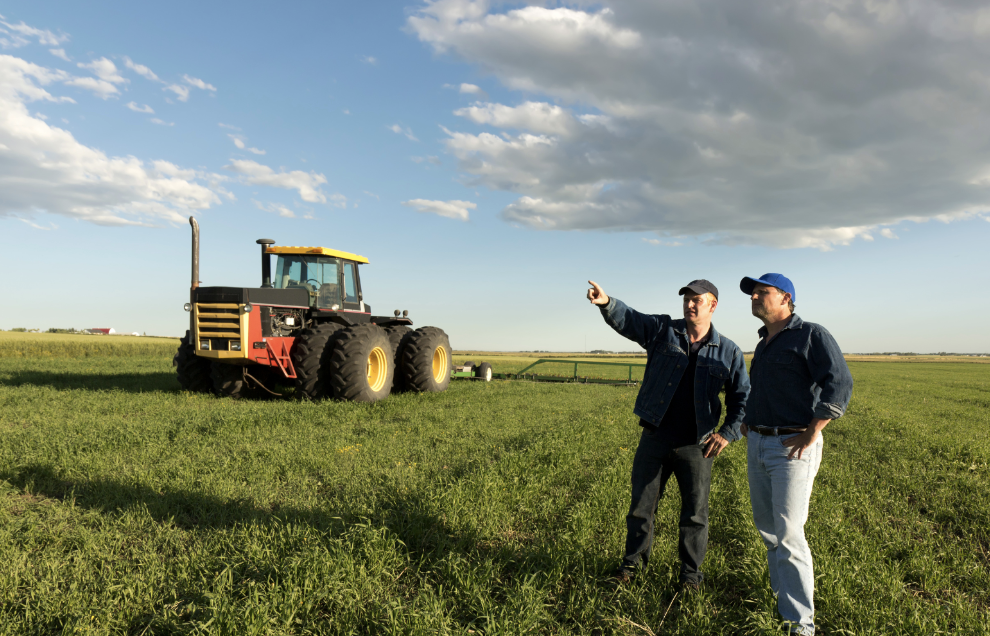
by Nolan Stumpf | Jun 27, 2023 | Electric Vehicles, Renewables, Solar
Solar fields can supply abundant, clean electricity – almost one-third of Wisconsin’s consumption by 2050 – using only a small portion of the state’s agricultural land. Nonetheless, solar energy development in agricultural areas raises new discussions of land use in Wisconsin. A recent report explores Wisconsin’s agricultural trends and outlines the potential solar energy has to sustain the state’s agricultural heritage, keep Wisconsin farmers in business, and provide environmental and economic benefits to the greater public. This blog will summarize the report’s findings and discuss the implications of solar energy development on land use for farmers in Wisconsin.
Wisconsin’s changing agricultural landscape
Wisconsin’s agricultural economy has changed substantially over the last several decades due to technological advancements, improved farm practices, evolving market conditions, and other macroeconomic trends. Data from the USDA National Agricultural Statistics Service shows that the amount of actively cultivated farmland has decreased by 23% since 1982, alongside the number of farm operations (from 90,000 to 64,100 in 2022).
At the same time, due to advancements in practices and technology, corn and soybean yields have increased dramatically (69% for corn and 75% for soybeans). However, the market’s oversupply has caused inflation-adjusted prices for corn to gradually decrease since 1909. Real prices for corn in 2022 are 51% lower than in 1940 and 42% lower than in 1980. Commodity price volatility has also added financial uncertainty for farmers, with farmers experiencing large annual swings in the prices received for corn. The downward trend in real prices and constant volatility in nominal prices shows why corn producers and other Wisconsin farmers face growing pressure to scale up their operations or sell their land.
Enrollment in the USDA’s Conservation Reserve Program (CRP), an ecosystem services program aimed at improving soil health and managing the oversupply of crops, has been decreasing since the early 2000s in Wisconsin. However, about 200,000 acres of voluntarily retired farmland under the CRP in the state is planted with ground covers such as grasses, trees, and native plants in exchange for an annual payment from the federal government.
Achieving a net-zero economy in Wisconsin with solar energy
Recent trends have allowed farmers to incorporate solar developments into a portion of their property and, at the same time, continue farming and sustaining their agricultural businesses. Solar fields offer stable revenue streams for Wisconsin farmers and financial support to local governments through the state’s shared revenue formula. RENEW Wisconsin’s collaborative report, Achieving 100% Clean Energy in Wisconsin (100% Clean Energy Report), shows that solar development opportunities will grow for Wisconsin farmers over the next few decades. According to the report, solar energy will be Wisconsin’s predominant source of new emission-free electricity generation to achieve a net-zero economy. In the most economical net-zero scenario explored in the 100% Clean Energy Report, 28.3 Gigawatts (GW) of utility-scale solar would be installed by 2050.
Solar energy will cover a relatively small amount of land by 2050
Based on the 100% Clean Energy Report, assuming the land footprint for 1 MW of utility-scale solar is 7 acres, approximately 198,000 acres would be required to host utility-scale solar in Wisconsin by 2050. Our analysis assumed 7 acres per MW of utility-scale solar PV to account for the increased productivity of solar panels over time. As one of the leading renewable resource technologies for the clean energy transition, solar panel design and installation layout will likely improve in the coming years, meaning solar fields will generate more electricity with fewer total inputs – including land.
Building 28.3 GW of utility-scale solar capacity would require 198,000 acres of land, which is 0.57% of Wisconsin’s total land area (34.7 million acres). This would equate to 1.4% of total agricultural land (14.2 million acres) or about 2.4% of field cropland (8.4 million acres) in Wisconsin from another perspective. These percentages assume all of the 28.3 GW of solar would be sited on agricultural land, which is unlikely. Though utility-scale solar developments have predominately been sited on farmland in the past, a study from UW-Stevens Point shows the vast land area across the state that may be suitable for utility-scale solar development.
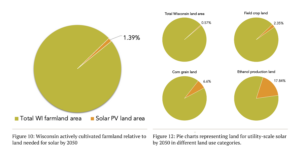
Ethanol and the future of energy farming
Farming for energy production is already common in Wisconsin, with about 37% of the corn grown used for ethanol. Wisconsin would only need to convert about 18% of corn-ethanol land to solar energy production by 2050 to achieve 28.3 GW of capacity. With a likely decrease in demand for corn-based ethanol needed by 2050 (due to the adoption of electric vehicles and substitution toward non-food crop feedstocks for biofuels), incorporating solar generation on farms is a way for Wisconsin farmers to help sustain their businesses.
A study by CLEAN Wisconsin demonstrates the efficiency of electric vehicles powered by solar energy over ethanol-powered vehicles. Their report finds that ethanol used in internal combustion engines requires about 85 times the amount of land to power the same amount of driving as solar-charged electric vehicles. Increased adoption of electric vehicles leads to decreasing gasoline demand and correspondingly diminishing the need for ethanol. With all else held constant, this trend will inexorably dampen corn prices received by the growers supplying local ethanol plants. Incorporating solar generation on farms is a way to sustain agriculture in Wisconsin, providing farmers with a stable revenue stream for years.
Co-benefits of solar energy on farms
Solar projects can provide beneficial ecosystem services to farmers and landowners in Wisconsin. Solar farms can last up to 35 years, allowing the land and soil underneath the arrays to rest and recover. Once a solar installation is decommissioned, the land can once again be farmed and will be more fertile when replanted, in contrast to residential or commercial development, which is much more permanent when complete [11]. Planting native plants and grasses amongst the arrays is becoming a standard practice, improving soil health and serving as pollinator environments.
In addition, advancements in design and technology have spurred research into agrivoltaics, or the simultaneous land use of solar energy generation and conventional agricultural activities. This co-location of activities provides many additional benefits, including dual revenue streams for the landowner and reduced heat stress on crops or grazing animals due to the shade of the solar panels. By altering the panels’ standard configurations and tilt schedules, researchers are investigating how to optimize crop yields and energy production.
Solar energy can help sustain Wisconsin farm businesses
Solar fields can supply almost one-third of Wisconsin’s electricity consumption in 2050 using a small portion of agricultural land. Nonetheless, agriculture is a significant part of Wisconsin’s economic and cultural identity, and Wisconsinites are connected to the image of Wisconsin’s landscape. As the farming industry continues to change, Wisconsin must allow farmers’ businesses to evolve. Solar developments can help family farms thrive with stable lease payments, support diverse soil health and ecosystem service benefits, and create local economic benefits. Wisconsin farmers and solar energy are helping to advance a stronger, healthier Wisconsin powered by clean energy.
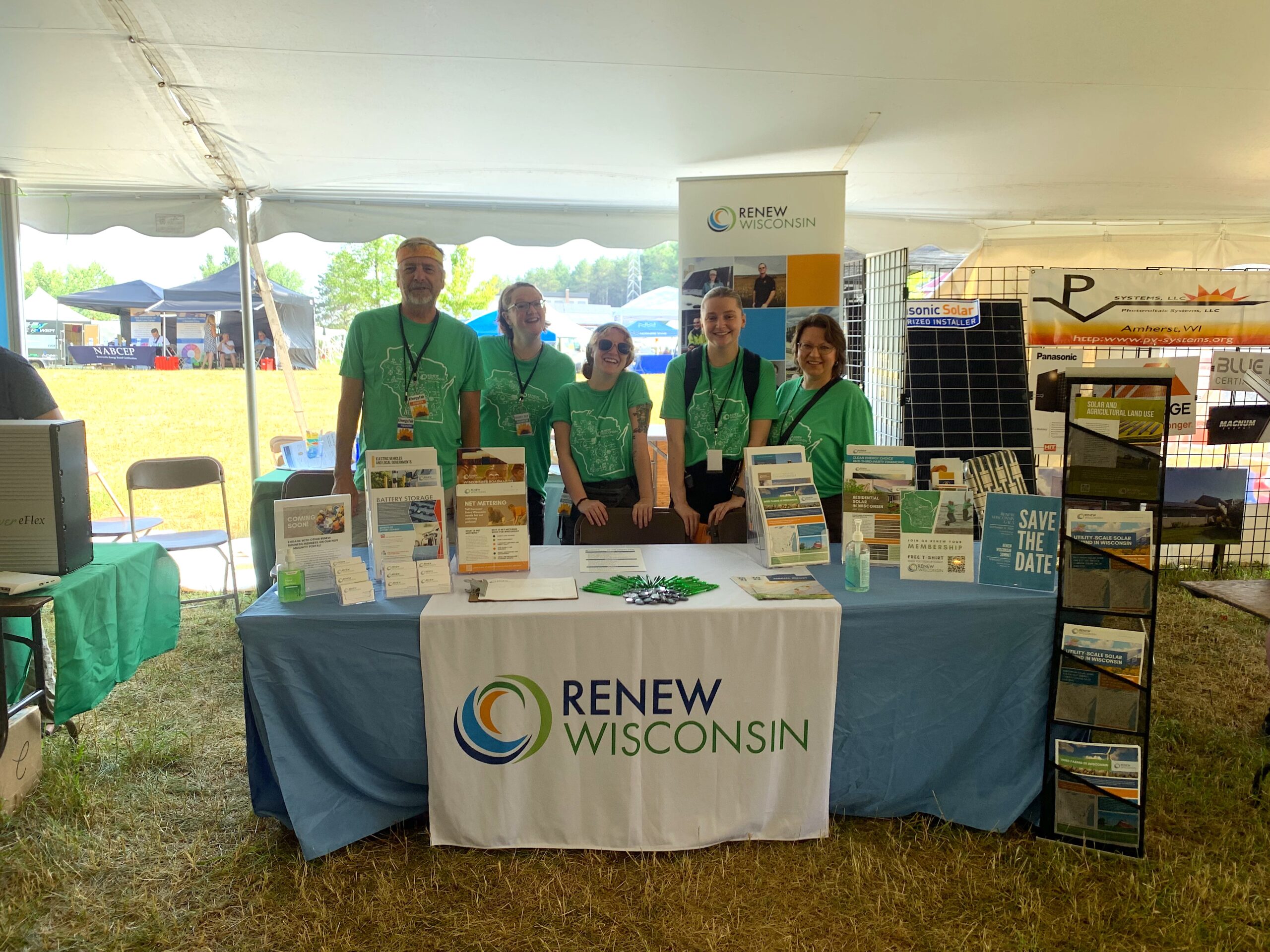
by Julia Holzschuh | Jun 27, 2023 | Electric Vehicles, Electrification, Energy Storage, Events, Inflation Reduction Act, Local Government, Netzero Wisconsin, Policy, Programs, RENEW Wisconsin, Renewables, Solar, Solar for Good, Sustainability, Utility Scale
Last weekend, the Midwest Renewable Energy Association (MREA) hosted the 32nd Annual Energy Fair, bringing people together to learn about sustainability and clean energy, connect with others, and take action toward a sustainable future. The Fair featured workshops, exhibitors, live music, inspiring keynote speakers, family fun, great local food, and more.
RENEW staff presented some compelling workshops and you can download slides from their presentations below.
Zero Carbon by 2050—A Path for Wisconsin
Andrew Kell, RENEW Policy Director, discussed zero-carbon goals and ongoing planning efforts in Wisconsin. Andrew also was a guest on a live podcast, focused on Wisconsin’s Net Zero future.
MadiSUN Workforce Training
Lauren Cohen, RENEW Program Coordinator, held a workshop regarding career growth opportunities within Wisconsin’s clean energy industry, focusing primarily on opportunities within the solar industry.
Vehicle-to-Grid: Opportunities and Challenges
Francisco Sayu, RENEW Emerging Technology Director, discussed how Vehicle-to-Grid technology unlocks the energy stored in electric vehicles and opens opportunities for energy trading, energy management, and grid resiliency.
Farming Sunshine: Solar and Ag Land Use
Nolan Stumpf, one of RENEW’s Interns, presented a session regarding solar farms and the opportunities and challenges of using the land for farming purposes and advancing clean energy.
Can Clean Energy Overcome Local Opposition?
Michael Vickerman, RENEW Clean Energy Deployment Manager, discussed the opposition clean energy faces at the local level and how to overcome those barriers.
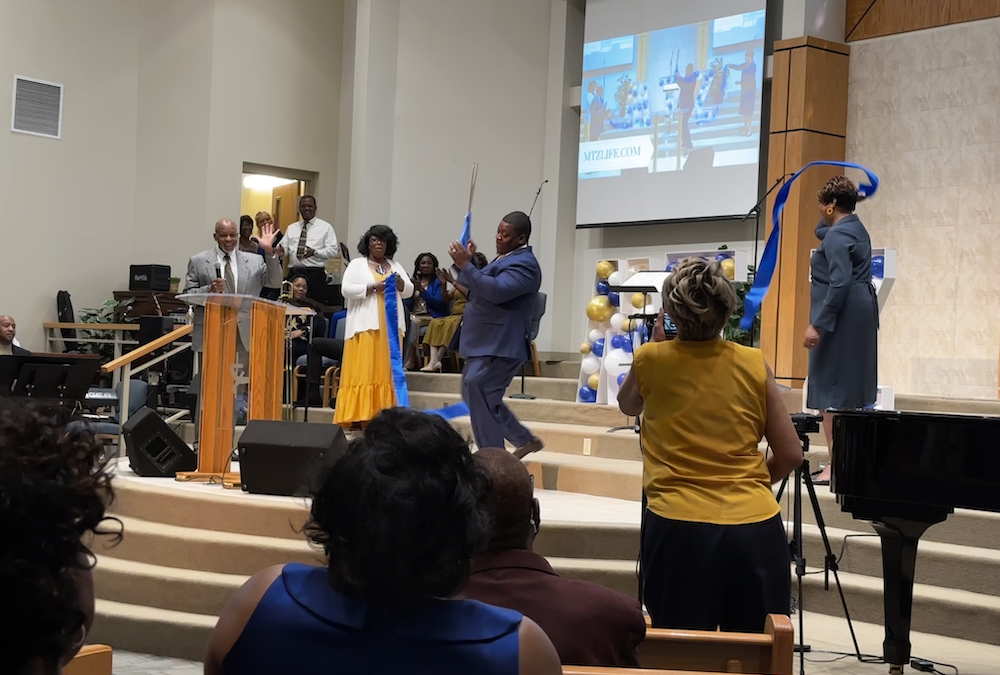
by Lauren Cohen | May 31, 2023 | Solar, Solar for Good
On Sunday, May 21, Mount Zion Baptist Church held a ribbon cutting ceremony to celebrate the completion of their 21.6-kilowatt solar array. Mt. Zion Baptist Church is the largest and one of the oldest predominantly African American churches in Wisconsin, with an unwavering mission to live their faith, love their family, and lift up their community.
RENEW Wisconsin, an organization dedicated to advancing renewable energy, played a pivotal role in Mt. Zion’s solar journey. Through their Solar for Good program, created in partnership with the Couillard Solar Foundation, Mt. Zion received a grant of 42 solar panels—enough to supply half of the panels required for the installation.
Additionally, Mt. Zion was awarded a Backyard Solar grant from MadiSUN, a City of Madison program administered by RENEW Wisconsin. This $10,000 grant further assisted the church’s solar endeavor. These collaborations exemplify the power of partnerships in expanding solar power access throughout Wisconsin.
Mt. Zion Baptist Church’s solar installation was made possible through the expertise and guidance of WES Engineering and Legacy Solar Cooperative. WES Engineering completed the installation, meanwhile Legacy Solar Cooperative provided invaluable consultation, offering their solar expertise, and assisting with tax financing options.
The solar installation at Mt. Zion Baptist Church is expected to produce roughly 24,500 kWh per year, offsetting 40% of the church’s annual energy needs. Beyond the environmental benefits, this installation has the potential to have a great positive impact on the community.
By embracing solar power, Mt. Zion has significantly reduced their monthly energy costs. These savings have allowed the church to reallocate resources to support their programs, particularly those dedicated to feeding the hungry and providing educational opportunities for underserved youth.
As a prominent institution within the South Madison community, Mt. Zion’s commitment to environmental stewardship serves as a great example, demonstrating the potential long-term economic and environmental advantages of transitioning away from nonrenewable resources, inspiring others to follow suit.
Mt. Zion Baptist Church’s solar ribbon cutting ceremony marked a significant achievement in their pursuit of sustainable stewardship. By embracing solar energy, the church has reduced its energy costs, directed more resources toward vital programs, and set a powerful precedent for environmental leadership within their community. Through this installation, Mt. Zion Baptist Church has shown that faith, family, and community can thrive hand in hand with a commitment to sustainable practices.
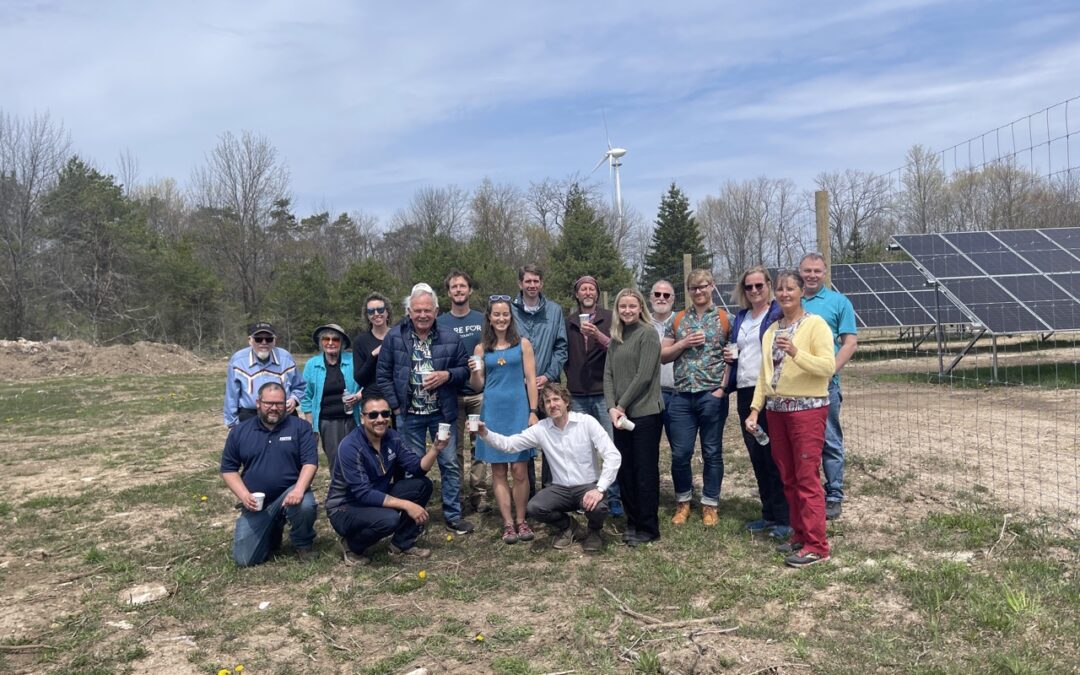
by Lauren Cohen | May 31, 2023 | Solar, Solar for Good
On Friday, May 12, Lawrence University celebrated the completion of its newly installed 217-kilowatt solar array. Lawrence University is a nonprofit, mission-based college with over 1,500 students from nearly every state and over 30 countries that is dedicated to educating undergraduate students in the liberal arts and sciences.
This solar array was installed by Faith Technologies at their Björklunden North Campus in Bailey’s Harbor, WI and is the most significant initiative in their goal of creating a net zero carbon emissions facility. This ground-mounted array consists of 536 solar panels and will produce 279,000 kWh of annual energy. With this solar installation, Björklunden’s entire annual energy usage will be offset.
This solar installation is not the first sustainability initiative taken on by Lawrence University’s North Campus. Their 441-acre lakeshore property is also home to a wind turbine and a soon-to-be geothermal installation. These renewable energy implementations create a unique opportunity for the University’s students to be able to study three energy sources—solar, wind, and geothermal—in one location.
“Sustainability is one of Lawrence’s four core values and—because it is a critical component of responsible citizenship—central to our educational mission,” says Mark Breseman, Associate Vice President of Alumni and Constituency Engagement. “Installing solar affirms our dedication to a sustainable future and advances our educational mission.”
This solar energy project was funded from several sources including Focus on Energy Funds, fundraising from friends, alumni, and the Door County Community, and a $10,000 grant from Solar for Good, a RENEW Wisconsin program created in partnership with the Couillard Solar Foundation with the goal of expanding solar energy in Wisconsin.
“The solar project will enhance the education we offer students and visitors, relieve energy costs to support our educational mission, facilitate research and technical innovations in solar and other forms of clean energy, and nurture environmental stewardship in the county,” continued Breseman.
The completion of their 217-kilowatt solar array at Björklunden is a significant milestone in Lawrence University’s journey towards achieving net-zero. By prioritizing sustainability, the university not only demonstrates its dedication to its educational mission but to advancing a renewable energy future. This installation enhances education, reduces energy costs, promotes research and innovation, and fosters environmental stewardship, setting an example for other institutions and communities aspiring to build a cleaner, greener future.
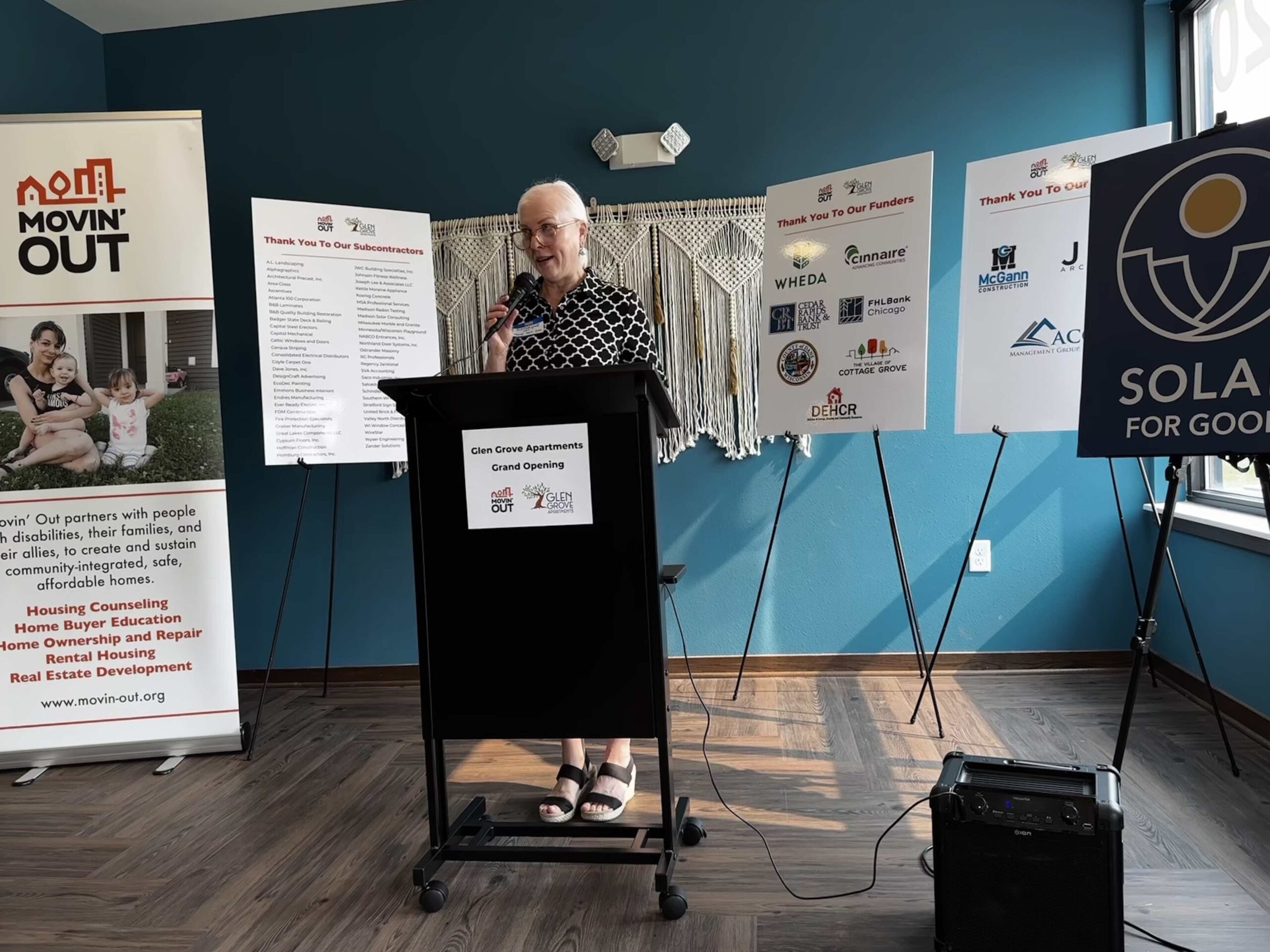
by Lauren Cohen | May 31, 2023 | Solar, Solar for Good
On Thursday, May 18, Movin’ Out Inc. celebrated the completion of its newly installed 20-kilowatt solar array. Movin’ out Inc. is a nonprofit organization located in Madison, Wisconsin whose mission is to provide housing solutions for people and families with disabilities, by creating safe, affordable, and community-integrated homes.
The solar system consists of 38 solar panels, was installed by Westphal Electric on the Glen Grove Apartments, and is projected to produce 24,216 kWh of annual energy, offsetting 90% of the building’s common-area electric loads.
This project came to fruition from multiple funding sources, including Focus on Energy Funds, a public fundraising campaign, as well as a donation from Solar for Good. Solar for Good is a RENEW Wisconsin program, created in partnership with the Couillard Solar Foundation to expand solar among nonprofits in Wisconsin.
Movin’ Out has been the recipient of two Solar for Good grants, receiving 19 of the 38 panels required for their most recent solar project. “Collaborating with Solar for Good allows us to include efficient and innovative approaches that would not be possible otherwise.” said Kathryne Auerback, CEO of Movin’ Out.
The economic savings generated by this solar installation are incredibly helpful to residents in affordable housing. The array “will help keep additional income in our residents’ hands to spend on healthcare costs, food, and purchase other discretionary items that residents in affordable housing are often times forced with making a decision to go without,” said Narik Riak, Real Estate Development Associate with Movin’ Out.
The reduced operating costs provided by the solar array will be reflected in the tenants’ monthly rent and minimize the possibility of future rent increases. With the installation of this solar array, Movin’ Out is addressing critical issues of environmental justice and energy burden. “Movin’ Out recognizes that multiply-marginalized communities are the most vulnerable to the effects of climate change, but often have the least access to resources that build resilience,” continued Carlson-Edwards.
By installing this solar array, Movin’ Out is empowering marginalized communities, and helping to build a more sustainable and resilient Wisconsin. This project highlights the transformative potential of renewable energy in creating positive change and will serve as a model for other organizations to follow.





